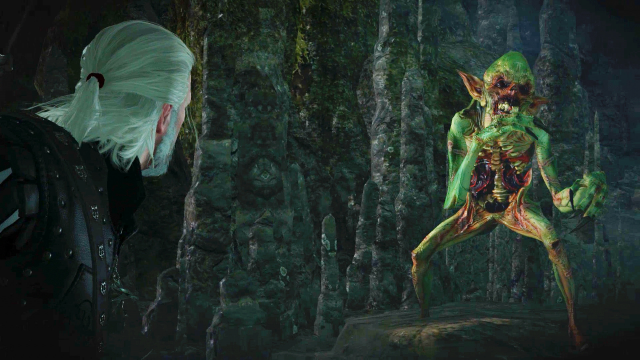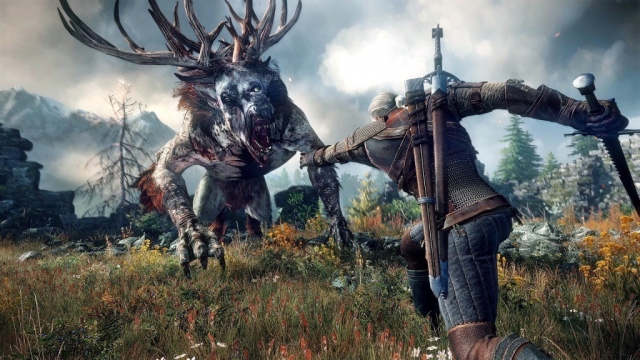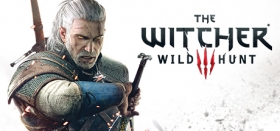
The Witcher 3's Monster Contracts are a Masterclass in Worldbuilding
The Witcher 3: Wild Hunt. Just leaving the name out there is a statement in and of itself. The title has become a benchmark for RPGs, storytelling and worldbuilding in videogames. In the eyes of many, it’s the perfect game. CD Projekt RED took three games to perfect its formula, and the title has been rightly praised for its storyline, characters and scope.
Yet, as compelling as the story may be, and as expansive and globe-trotting as it is, it isn’t the meat and bones of The Witcher 3, and it’s not what catapulted the game to the stratospheric popularity it now enjoys. The world of The Witcher 3, which includes the no man’s land of Velen, the cities of Novigrad and Oxenfurt, the frozen Skellige isles and the peak-straddling keep of Kaer Morhen, is spectacularly realised and filled with so much culture, history and downright stuff that all other open world attempts pale in comparison.
Anyone who’s ever tried to run a Dungeons & Dragons campaign will know that world-building is a difficult feat to accomplish. Anyone can create a fantasy world and populate it with cities, dungeons, forests and exotic races, but making that world feel like a living, breathing setting is a far harder task.

CD Projekt RED already had the setting ready to go, taken from Andrzej Sapkowski’s book series, something it had worked with for two games prior to Wild Hunt. The first two titles had been fairly on-the-rails for RPGs, moving the player from one set-piece arena to another, which the developers could pack with quests, monsters, items and NPCs. When you expand that playing area to encompass an entire continent, it gets much harder to imbue that world with life and character.
To give the developers credit, The Witcher 3 is superbly designed to gravitate the player towards quest hubs, NPCs and locations with lots of action, and the world is scattered with small-scale quests and interactions. The devs at CD Projekt RED could have said “excellent, that will do”, and no-one would have blamed them.
Yet the world of The Witcher is full of monsters, and Geralt is a famed monster hunter. So, the devs decided to introduce monster hunting contracts - small quests picked up at notice boards that allow Geralt to ply his trade and earn some extra coin. These could have been throwaway fetch quests, go-there-kill-this missions or even dreaded escort missions - just something to keep bored players occupied if they strayed from the main storyline. This was very much the case for contracts in the previous two games, which rarely had questlines attached to them. In The Wild Hunt they are so much more.

The Continent is infested with strange creatures following the lore's magical “conjunction of the spheres”. Spirits, monsters and fae dot the land, all muddling through and coping with their circumstances as much as humans. Few are portrayed as outright evil, most are simple creatures doing what their instincts tell them to do, and in dispatching them the player can feel a strange sense of place within the game world - that they have been inserted into a biological life cycle.
Almost every witcher contract in the game involves interaction with the game world. Geralt must talk to a worried quest-giver, haggle over his fees (and probably play a round of Gwent while he’s there), then set off into the local countryside in what are essentially miniature-scale whodunnits. Some will lead to unexpected twists, tough choices and moral quandaries, others will build the tension around specific monsters to almost breaking point, then create set-piece battles to remember.
Each contract is written so tightly that players could be forgiven for foregoing the main story altogether to answer the call of the monster hunter-for-hire. Your quarry is woven into its locales. There are spirits of murdered spouses, wrongly-worshipped elemental deities, and creatures angered into deadly self-defence. Some will have been tormenting villages for years, and have become as much a part of the world’s lore as Geralt and his compatriots. CD Projekt RED skillfully blurs the lines of morality, too, by having many of the quests dip into that well-worn trope: sometimes humans are the monsters, too.

The care the developers put into these - essentially throwaway - quests means that many of the game’s most memorable moments are from witcher contracts. There’s the vampire with a penchant for drunks - forcing Geralt to have to get hammered on wine to fight it - who he will continually call a “bitch”. Then there’s “Wild at Heart”, whereupon a jealous sister causes the death of her sibling by forcing the man they both love to change into a werewolf and devour her. Another memorable moment comes from “Where the Cat and the Wolf Play”, in which Geralt must pass judgement on a fellow witcher after the man slaughtered a village for not paying his contract price.
Any of the quests mentioned have the same amount of narrative skill and enjoyment that you would expect from a mainline quest, and yet they can be passed by completely if the player chooses. Playing them, though, adds a layer of depth the world Geralt inhabits, and creates a setting that the player feels genuine care for. You can pass a village that could have been another worthless landmark, and think “oh, this is where the villagers were tricked by a Satyr” or “I remember fighting that Leshen around here”. That emotional connection and player investment is the giant upon whose shoulder the game’s main storyline stands, and explains The Witcher 3’s success so perfectly.











COMMENTS